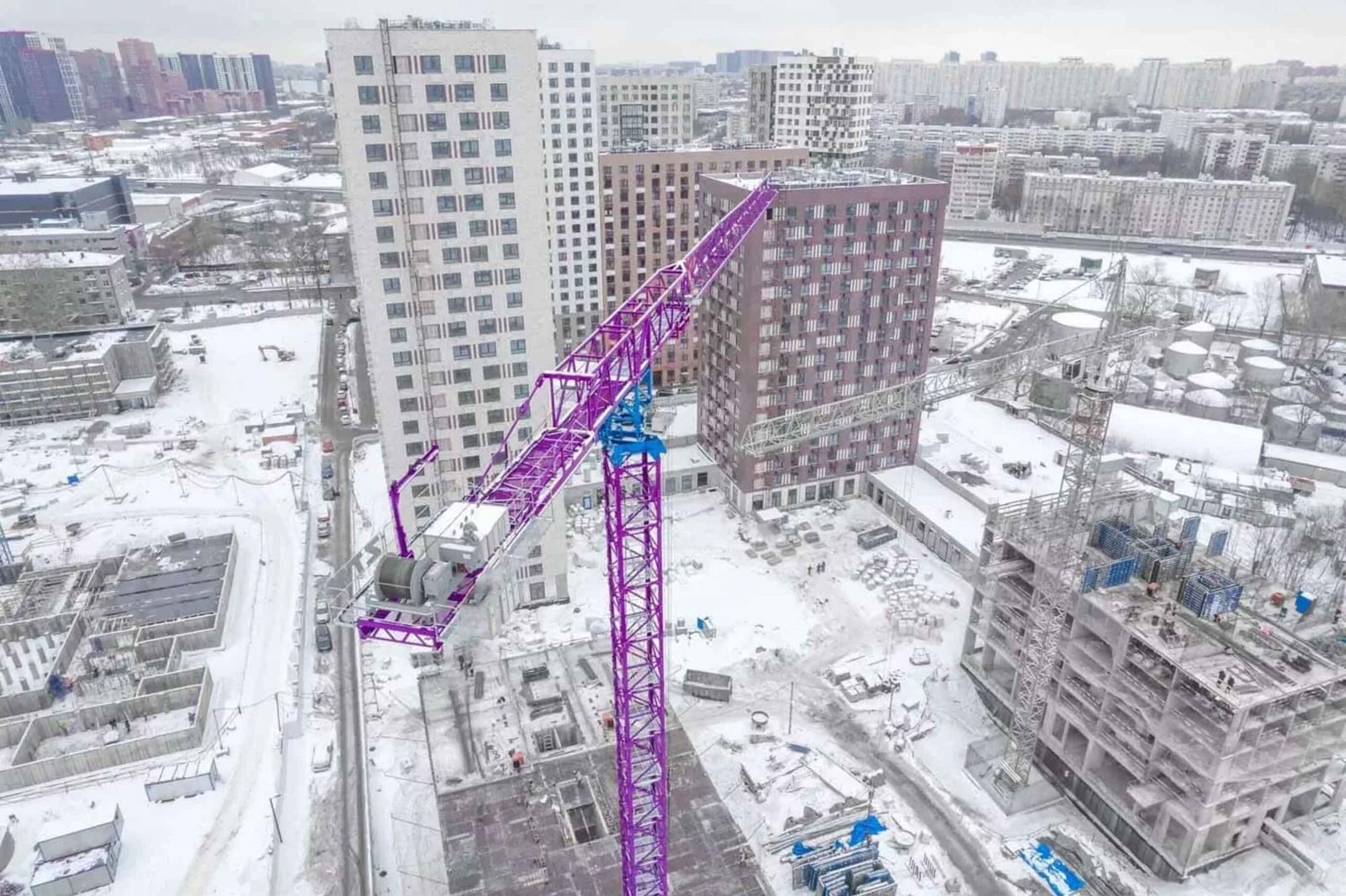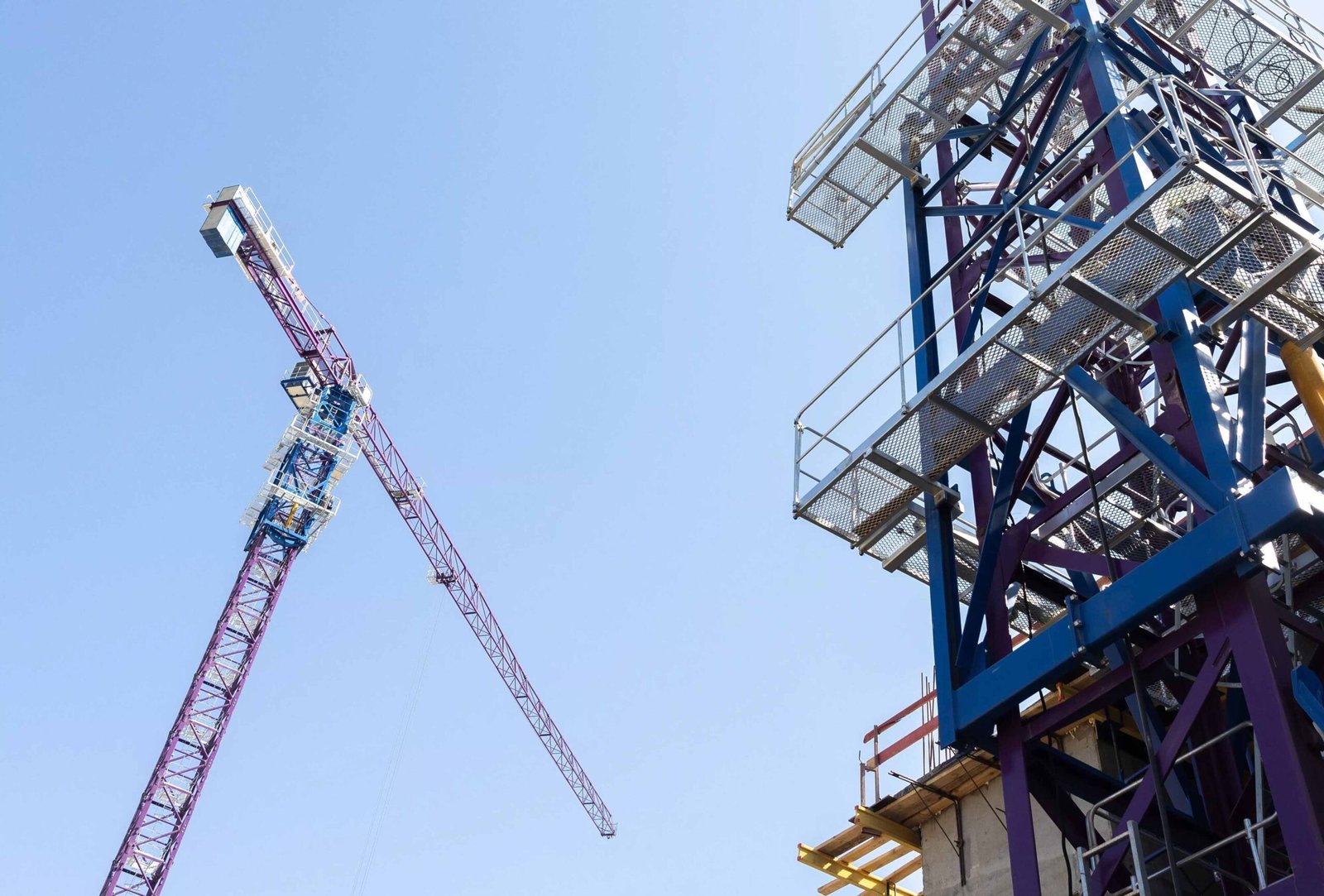
Tower cranes are massive structures designed to lift heavy loads, but what happens when wind picks up? Do they sway, or worse, fall over? Let’s explore this.
Tower cranes are engineered to handle wind1, but what keeps them safe? This article explains how they stay stable in challenging conditions.
Wind can pose a serious challenge to tower cranes, especially in tall structures. But, you might be wondering: How do they stay up without toppling? Keep reading to understand the safety mechanisms in place.
What keeps tower cranes from falling over?
Tower cranes are designed to withstand high winds, but they’re not immune to the forces of nature. The question remains: how do they avoid tipping over in strong gusts? It's all about balance, design, and safety features.
Tower cranes stay upright2 thanks to their solid base, counterweights, and sophisticated wind monitoring systems.

Base Design and Anchoring
The first line of defense against wind is the crane’s foundation. Tower cranes are anchored into the ground with a deep concrete base. This strong foundation ensures that the crane’s structure remains stable and resistant to toppling over. A typical tower crane can stand on a base up to 15 feet deep, securing its position even in heavy winds.
Counterweights for Balance
Counterweights play a critical role in keeping the crane stable. These heavy blocks are placed on the opposite side of the crane’s load, creating a balanced force. In high winds, the counterweights prevent the crane from tipping over by offsetting the force from the wind. They’re positioned near the base to help stabilize the entire structure.
Wind Speed Monitoring
Most modern tower cranes are equipped with wind speed sensors that help operators gauge whether it’s safe to keep lifting. If wind speeds reach unsafe levels (usually around 40-45 mph), cranes automatically stop their operation to prevent accidents.
Safety Measures
Below is a table showing the key design features and safety measures that prevent a tower crane from falling over:
| Feature | Purpose | Details |
|---|---|---|
| Concrete Foundation | Ensures crane stability | Deep foundation (up to 15 feet) anchors the crane securely to the ground to withstand wind forces. |
| Counterweights | Balance crane’s weight to prevent tipping | Heavy blocks placed on the opposite side of the load to offset wind forces. |
| Wind Speed Sensors | Automatically stop crane operation when wind is too strong | Sensors monitor wind speed, and the crane halts operation if winds reach dangerous levels. |
| Tower Design | Reduces wind resistance and enhances stability | The design of the tower, with a narrow profile and reinforced structure, helps reduce the impact of wind. |
Do tower crane counterweights move?
A counterweight is essential for keeping the crane stable during operation, but do they shift with wind? In short, no – they remain firmly in place.
Tower crane counterweights3 do not move in response to wind. They stay secured to the crane to maintain balance.

Fixed Position
The counterweights used in tower cranes are typically fixed in place to prevent any unnecessary movement. They're bolted onto the base of the crane’s mast or placed on the rear end of the jib. This design ensures the crane's stability by preventing any shifting during gusty conditions.
Adjusting for Load
While the counterweights themselves do not move in the wind, they can be adjusted when the crane is being set up. Operators adjust the weight based on the load the crane is lifting, ensuring the crane remains balanced. However, once set in place, the counterweights remain immovable.
How Counterweights Work
Counterweights are designed to offset the load being lifted by the crane. Their placement is carefully calibrated based on the weight of the material being lifted. Here is an illustration of how they function:
| Counterweight Position | Load Lifted | Effect |
|---|---|---|
| Front of the crane | Heavy load is at the jib end | Stabilizes crane by balancing the load with weight at the rear. |
| Rear of the crane | Lighter or balanced load | Ensures crane remains balanced by offsetting the load's force. |
How does a crane rotate?
Tower cranes are famous for their ability to rotate 360 degrees, which allows them to lift and move loads from any angle. But how does this rotation work?
Snippet paragraph: A tower crane rotates4 thanks to a motorized slewing mechanism, enabling it to move loads freely.

The Slewing Mechanism
A tower crane rotates using a system called a slewing mechanism. The slewing drive consists of a motorized gear system located near the crane’s base. This system works by rotating the entire upper portion of the crane, known as the “top slewing” section. The slewing motor is powered by electricity or hydraulic pressure, allowing the crane’s top to rotate continuously.
Load and Arm Adjustments
As the crane rotates, the operator can control the arm to move the load into position. The slewing mechanism ensures that the crane can rotate smoothly, allowing the operator to position materials exactly where needed, whether the load is small or large.
Rotation Control
Here is a table showing how the rotation of the crane is controlled:
| Control System | Function | Description |
|---|---|---|
| Slewing Mechanism | Rotates the crane 360 degrees | Allows the crane's top section to move, enabling load positioning. |
| Operator Input | Controls crane movement | The operator uses joysticks or control systems to adjust crane positioning. |
| Hydraulic or Electric Power | Drives rotation | Either hydraulic pressure or electric motors power the slewing mechanism. |
How do tower crane operators get to the top?
Tower crane operators are essential for controlling the crane’s functions, but how do they reach the high platforms where they operate?
Tower crane operators5 climb via a dedicated ladder or use a hoisting system to reach the top of the crane.

Climbing the Crane
One method of getting to the top is through a built-in ladder. Tower crane operators typically use a vertical ladder that runs up the crane’s mast. This climb can be physically demanding, but it’s essential for operators to access the controls, especially in tall cranes.
Hoisting Systems
For taller cranes, operators often use a hoisting system. This is an elevator-like device that transports the operator to the top of the crane. The hoist is designed to be safe, with locking mechanisms to ensure that operators are secured during their journey up.
Safety Measures
Here’s a breakdown of the two main ways operators reach the top:
| Method | Description | Advantages |
|---|---|---|
| Climbing Ladder | A vertical ladder built into the crane’s mast. | Physical exercise; low-maintenance method. |
| Hoisting System | A mechanical lift that transports operators to the top. | Safer, faster, and less physically demanding. |
Conclusion
Tower cranes are designed with multiple safety features to remain stable and operational even in windy conditions. Their design, counterweights, and wind monitoring systems ensure they don’t fall over.
-
Understand how tower cranes are designed to withstand wind forces and stay stable. ↩
-
Learn about the key design features that prevent tower cranes from tipping over. ↩
-
Find out how counterweights in tower cranes stay fixed and help maintain stability. ↩
-
Understand how the slewing mechanism works to enable 360-degree rotation of tower cranes. ↩
-
Learn the different methods tower crane operators use to access the crane's top, such as climbing or hoisting. ↩






